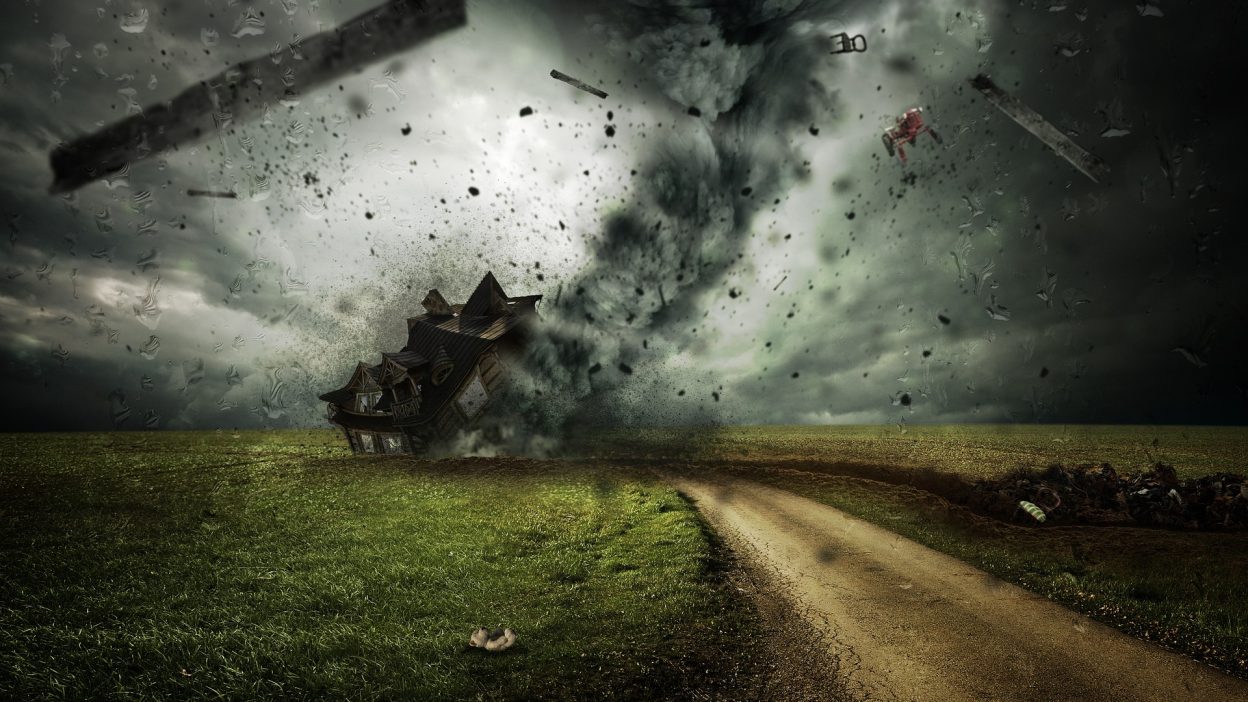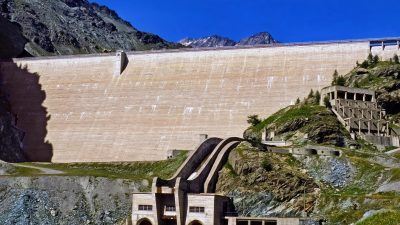The Forgotten Storm That Shattered Lives And Exposed Fatal Gaps In Disaster Preparedness
Cyclone Winnie, which occurred in 1961, remains a powerful yet often forgotten disaster in the history of global storms. Despite the devastating nature of this storm, it often gets overshadowed by other major disasters. However, its intensity and the level of destruction it caused were remarkable. The storm’s impact on both communities and infrastructure was substantial, and its effects lingered long after it had passed.
Though it didn’t dominate the media like some other storms, Cyclone Winnie’s devastation left behind lasting physical and emotional scars in the affected regions. Its legacy serves as an important reminder of how unpredictable nature can be, and it calls for more serious attention to disaster preparedness and response for future catastrophes.
Was Cyclone Winnie 1961 One of the Deadliest Storms Ever?
The legacy of Cyclone Winnie often sparks a debate about its place among the most destructive cyclones in history. While it might not hold the title of the deadliest storm in recorded history, its impact on local populations and infrastructure was immense. The repercussions of Cyclone Winnie were felt for many years after, and its story serves as a grim illustration of nature’s power.
When compared to other notable storms of the time, Cyclone Winnie stood out for its sheer destructive force. Its effects were not limited to physical damage; it also caused severe disruptions to the lives of individuals and entire communities, with far-reaching consequences. The storm serves as a sobering reminder of how vulnerable we are to such devastating forces, even in an age of increasing technological advancements.
The Horrific Impact of Cyclone Winnie 1961: Thousands of Lives Lost
- Death Toll: Cyclone Winnie was responsible for the tragic loss of over 10,000 lives. The overwhelming scale of the disaster left entire communities grieving, and many families were left shattered. The event highlighted the brutal reality that no one can predict the full extent of a natural disaster’s fury until it unfolds.
- Injuries and Displacement: The storm also left thousands of people injured, some sustaining life-changing injuries. In addition to physical harm, the cyclone displaced many individuals, leaving them without homes or resources. Entire areas were wiped out, forcing people to rebuild their lives from scratch.
- Statistical Overview: Cyclone Winnie caused widespread devastation. Its extreme winds and torrential rainfall led to massive flooding and structural damage across large regions. The aftermath of the storm resulted in thousands of destroyed homes, obstructed transportation networks, and the collapse of vital services. This disaster showed how quickly a vulnerable region could be overwhelmed by such a severe event.
Cyclone Winnie 1961: A Natural Calamity or A Case of Poor Preparedness?
The response to Cyclone Winnie in 1961 has sparked ongoing discussions about whether the catastrophe was simply the result of a natural disaster or if it could have been mitigated with better preparation. Though the storm itself was undeniably powerful, critics argue that the lack of adequate planning and response exacerbated the destruction and the loss of life.
At the time, local authorities struggled to deal with the unprecedented scale of the cyclone. The disaster response was slow, and resources were insufficient, which contributed to the severity of the damage. This event prompted a rethinking of how disasters should be managed and the importance of preparedness in reducing the impact of future storms.
The Political Fallout of Cyclone Winnie: Responsibility and Blame
Following Cyclone Winnie’s devastation, political figures faced intense scrutiny for their handling of the situation. Many believed that the government had failed to take adequate action before and after the storm. Critics argued that there was a lack of disaster preparedness and that relief efforts were hindered by inefficiency and poor coordination.
As the impact of the cyclone became evident, government officials were pressured to explain their lack of immediate action and their inability to provide sufficient support to the victims. The political fallout from this event raised important questions about the government’s role in disaster management, leading to discussions about improving policies and infrastructure to better prepare for similar events in the future.
The Role of Climate Change in Cyclone Winnie: Was It a Sign of Things to Come?
Cyclone Winnie marked an important turning point in discussions about the impact of climate change on natural disasters. In 1961, scientists began to understand the connection between rising global temperatures and the increase in the frequency and severity of storms. Cyclone Winnie, with its powerful winds and extensive rainfall, was an early indicator of the growing risk posed by climate change.
This storm drew attention to the pressing need for global environmental policies and strategies to mitigate the effects of climate change. Experts highlighted how the rise in ocean temperatures contributed to the intensity of storms like Cyclone Winnie, and urged governments to take action before more extreme weather events became the norm. The disaster played a key role in raising public awareness about the potential consequences of environmental neglect.
Cyclone Winnie 1961: Infrastructure Failures Exposed
Cyclone Winnie’s impact was amplified by the lack of strong infrastructure in the affected areas. Roads were destroyed, bridges collapsed, and communication systems failed, leaving people stranded and unable to contact emergency services. The lack of resilient infrastructure was a key factor in the devastating consequences of the storm.
The event exposed the critical vulnerabilities of the region’s infrastructure, prompting calls for better disaster planning and investment in infrastructure that could withstand extreme weather. Cyclone Winnie underscored the need for stronger building standards and improved transport and communication systems to protect communities from the worst effects of future storms.
The Human Cost of Cyclone Winnie: Stories of Survival and Loss
Survivors of Cyclone Winnie have shared powerful stories of personal loss and survival. Many of those affected by the storm suffered tremendous losses, but their experiences also highlight the extraordinary resilience of the human spirit. Despite the overwhelming destruction, people came together to rebuild their lives and communities.
The long recovery process following the cyclone was marked by a sense of solidarity and hope. The stories of those who survived, and their efforts to support one another in the aftermath, provide valuable lessons in perseverance and the importance of community resilience in the face of disaster.
Predicting Cyclone Winnie: Could It Have Been Foreseen?
- Weather Prediction in 1961: In 1961, weather prediction technology was still developing, and the ability to track such powerful cyclones was limited. The full extent of Cyclone Winnie’s strength was not known until it was too late, making it difficult for authorities to issue warnings in advance.
- Advancements in Meteorology: Since the 1961 disaster, technological advances in meteorology have greatly improved the accuracy of weather forecasting. Modern forecasting techniques, including satellite imagery and advanced climate models, now allow for better tracking of storms, making it possible to predict cyclones like Winnie with greater precision. These improvements have been crucial in saving lives and reducing damage during subsequent storms.
Conclusion: The Legacy of Cyclone Winnie – Are We Truly Prepared for Future Storms?
The legacy of Cyclone Winnie continues to shape disaster management practices today. While there have been significant improvements in weather forecasting, infrastructure, and emergency response, the question remains: are we fully prepared for the challenges posed by increasingly severe natural disasters? Cyclone Winnie serves as a stark reminder that even the most advanced systems may not be enough to prevent widespread destruction unless we continue to invest in preparedness and resilience.
As we look to the future, we must reflect on the lessons learned from this and other major storms. The devastation caused by Cyclone Winnie reminds us that no matter how much progress is made, we must always remain vigilant and proactive in protecting vulnerable communities from the worst impacts of nature.
FAQs
- How many lives did Cyclone Winnie 1961 claim?
Over 10,000 people lost their lives during the storm, with countless others injured or displaced. - What impact did Cyclone Winnie have on the economy?
It caused severe damage to infrastructure, agriculture, and businesses, leaving lasting economic consequences. - Was Cyclone Winnie the deadliest storm in history?
While not the deadliest storm of all time, it remains one of the most destructive, given the scale of its impact on local populations. - What went wrong in the response to Cyclone Winnie?
The slow response and inadequate resources made the situation worse, highlighting the need for better disaster planning and preparedness. - Can we prevent cyclones like Winnie from happening?
While cyclones can’t be prevented, better forecasting and disaster management systems can reduce their impact and save lives.
References:
1961 North Indian Ocean cyclone season




